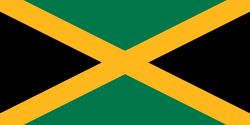Neville Staple
| Neville Staple | |
 | |
| Födelsenamn | Neville Eugenton Staple |
|---|---|
| Pseudonym(er) | Judge Roughneck |
| Födelsedatum | 11 april 1955 Christiana, Manchester Parish, Jamaica |
| Bakgrund | |
| Genrer | New wave, 2 Tone, ska |
| Roll | Sångare |
| År som aktiv | 1977 – |
| Skivbolag | 2 Tone, Chrysalis |
| Relaterade artister | The Specials, Fun Boy Three, The Neville Staple Band, Special Beat |
Neville Staple (född 11 april 1955 i Christiana på Jamaica) var andresångare i det brittiska skabandet The Specials, som hade sin storhetstid 1979-1981.
1981 hoppade han av tillsammans med medlemmarna Terry Hall och Lynval Golding och bildade Fun Boy Three.
I slutet på 1990-talet bildade han, tillsammans med The Beat's (också ett skaband) Ranking Roger Special Beat, som spelade hits från de två banden. Han medverkade också i sången "Explosive" med skabandet The Planet Smashers.
2006 turnerade Staple i Storbritannien. Hans dotter, Sheena Staple, arbetar på ett soloalbum, och hans son, Darren Simms, är sångare i det amerikanska reggae/rockbandet "Dreadstarr".
Diskografi
- Soloalbum
- 2001 – Neville Staple from the Specials
- 2004 – The Rude Boy Returns
- 2005 – The Rude Boy Returns: Neville Staple Live (DVD)
- 2014 – Ska Crazy
- 2017 – Return of Judge Roughneck & Dub Specials
- Samlingsalbum
- 2000 – Ghost Town: 13 Hits of the Specials and Fun Boy Three
- 2006 – The Best of the Specials & Fun Boy Three
- Solosinglar/EP
- 1998 – Skanktastic (EP) (med Lynval Golding och Roddie Radiation)
- 2004 – "Pressure" / "Cow Cow Yicky"
Externa länkar
 Wikimedia Commons har media som rör Neville Staple.
Wikimedia Commons har media som rör Neville Staple.- Neville Staple på allmusic.com
- Diskografi på Discogs
- Neville Staple på IMDb
|
Media som används på denna webbplats
Flag of Jamaica. “The sunshine, the land is green, and the people are strong and bold” is the symbolism of the colours of the flag. GOLD represents the natural wealth and beauty of sunlight; GREEN represents hope and agricultural resources; BLACK represents the strength and creativity of the people. The original symbolism, however, was "Hardships there are, but the land is green, and the sun shineth", where BLACK represented the hardships being faced.
Författare/Upphovsman: Man Alive!, Licens: CC BY 2.0
Neville Staple performing at the Rochdale Feel Good Festival on Saturday 31st August 2013.
Neville Staple performing at the Rochdale Feel Good Festival on Saturday 31st August 2013.

